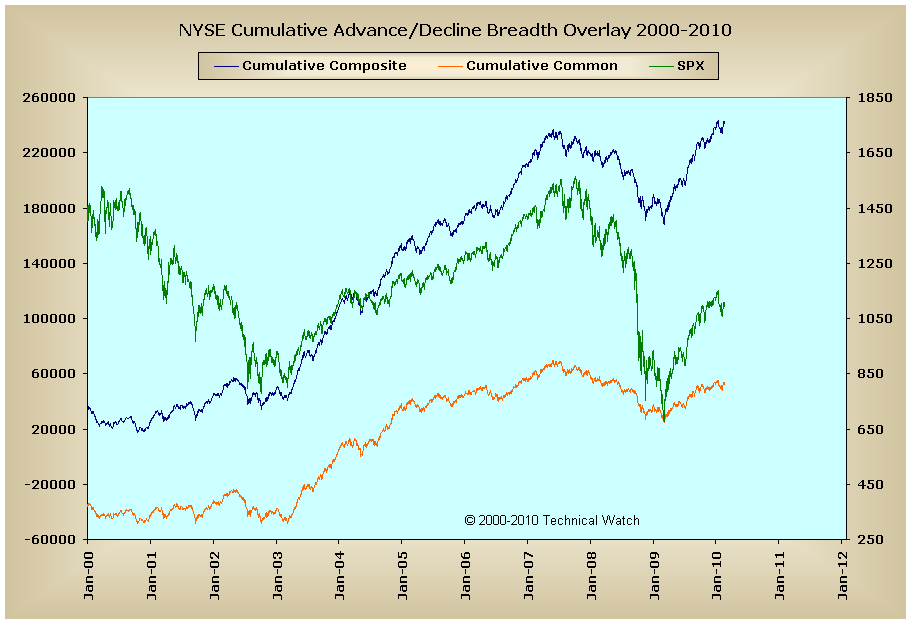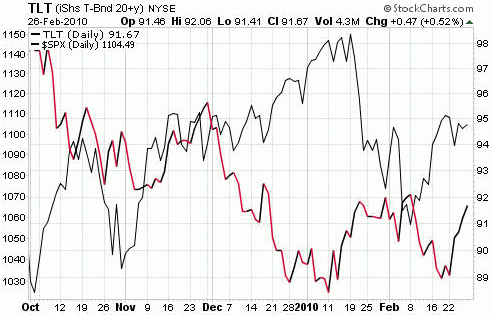We've had this debate many times over the years, long before your arrival. So I'm with Fib, I'm going to pass. Perhaps you could search the archives. Or alternatively, if you've convinced yourself that the A/D is meaningless, then simply don't use it.
Meanwhile, perhaps you could explain to me how the many closed-end bond funds and preferred stocks that are interest-rate sensitive and are included in the NYSE A/D line would have no forecasting ability for the indexes. Call me crazy, but I would think interest rates might have something to do with the direction of stock prices...but hey, what do I know?
IT
O.K. INDEXTRADER, you took a shot at me and ran off, but I'd still be happy to provide you with a brief explanatioin. It's actually an important question, notwithstanding your terrirotial attitude. One reason you can not include the bond funds, i.e. the well known TLT, is that it has the propensity to trend inversely to the stock market. Therefore, it skews the indicator.
No, you're not crazy; you just don't have the knowledge.
Ran off?

I'll let my wife know that her social requirements now fall under YOUR category of "running off". Some of us occasionally have something else to do besides monitor this message board. Meanwhile, I've reviewed my post above to see exactly where I "took a shot at you". Help me out, I'm not seeing it. I do see a few "shots" on your part....which I'm going to let pass.
Your comments here, and on other threads, all indicate that you find the NYSE cumulative A/D line useless. So be it. I use the A/D every day in my trading. I have for years. I first started using it over 40 years ago. It provides an input that I find valuable, like other measures that I also look at. I have no problem at all with the idea that what I find valuable, you find useless. When I say valuable, what I mean is that I believe it gives helpful clues at times (not all the time) as to the short term direction of stock prices, which is mostly what I'm concerned with. That said, the A/D is not "perfect", and therefore it is only one of a number of tools that I look at.
I don't have a problem with the inclusion of interest rate related securities, despite your contention that it "skews" the index. You point out that TLT has a tendency to move against the trend of the stock market. IF that were true, then this would in fact mean that some securities in the NYSE A/D line were moving down, and perhaps moving down ahead of the peak of the general market. That the whole point isn't it? However, I've been around long enough to have seen interest rates move both with and against stock trends, so that TLT may not always be "skewing" the A/D line. The point is that there will always be securities moving up or down. Taken in their entirety they may well have something to say about the course of stock prices. I definitely want those interest rate related securities in there. Just chalk it up to my lack of knowledge Techman.
IT




















